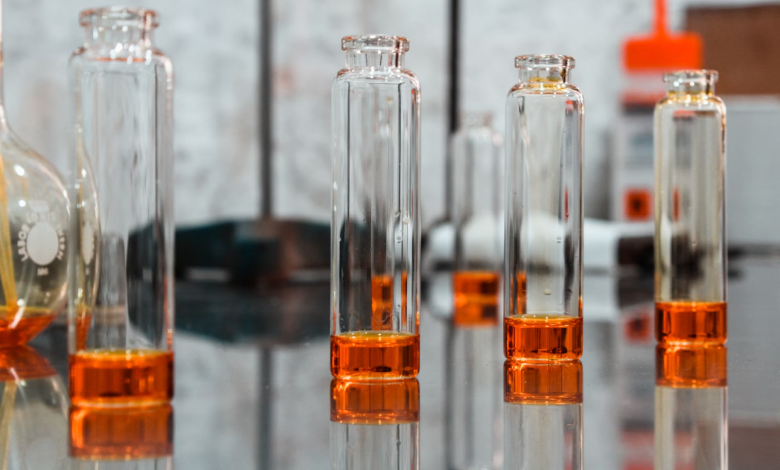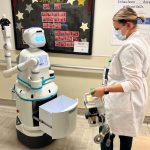Advancements in Robotic Scripts for Biological Laboratory Automation

The modern biological lab hums with a constant undercurrent of activity – a symphony of discovery where groundbreaking research unfolds daily. However, the path to scientific breakthroughs isn’t without its challenges. Precise manipulation of delicate samples, meticulous execution of repetitive tasks, and the inherent risks associated with hazardous materials are constant hurdles. For illustration purposes, 8 lab workers need to handle roughly 4,500 samples per shift.
Fortunately, advancements in robotics technology, coupled with the development of intricate robotic scripts, are orchestrating a revolution in how biological research is conducted. These innovative scripts are transforming laboratory workflows, enhancing safety, and accelerating the pace of scientific discovery.
Programming Life From the Ground Up
Synthetic biology is a new way of doing biology. Instead of just studying and understanding life, scientists try to design and make new kinds of biological systems. The field of synthetic biology needs careful control over genetic material, complicated cell cultures, as well as exact management of cellular activities.
In the area of synthetic biology research, robotic automation with well-designed scripts is an important tool. These scripts make it possible for robots to carry out complex jobs with an accuracy and repetitiveness that cannot be matched. This includes tasks like automated DNA assembly, high-throughput cell culturing, and exact handling of biomolecules – all crucial stages in the creation of new biological systems.
The Power of Automation Scripts: Efficiency and Accuracy
Scripts are essentially the language that robots understand. These scripts, which are written by programmers or researchers with scripting expertise, give detailed instructions to robots on how they should perform a specific task. The main advantage of robotic scripts in a biological laboratory is their capacity to automate repetitive tasks like pipetting, handling samples, and preparing media. These jobs, although necessary, might take a lot of time and involve mistakes by humans.
Robot scripts guarantee that these duties are carried out with consistency and precision that cannot be matched by humans. This frees up researchers for more complicated parts of their job like analyzing data or understanding its meaning. They can also create personalized robotic scripts for certain protocols and research requirements, giving them unmatched adaptability in automating various laboratory procedures.
Enhanced Safety and Reduced Contamination Risks
Scripts are important in biological labs because they aid in lowering the danger of dealing with dangerous materials and infectious agents. Robot scripts decrease interactions between people and possibly harmful substances, which is crucial for keeping safety standards high when handling things like chemicals or biological agents.
These scripts can program robots to carefully handle these risky items, hence decreasing the chance of accidental exposure for researchers who work with them. This guarantees the reliability and repeatability of research results. The safety of the lab environment is improved, along with the production of dependable data.
Beyond Efficiency: Advancing Scientific Discovery With Scripting
The good outcomes of robotic scripts for biological research are not only about making work quicker and more accurate. They also provide researchers with the chance to venture into new scientific areas that might be difficult to approach without their help. For example, robotic scripts can be created to carry out complicated protocols involving many steps flawlessly, giving scientists an opportunity for deep investigation into intricate biological processes.
Also, the automation of tasks that are repetitive and require less human involvement allows researchers to study different experimental conditions. This helps in getting a complete comprehension of biological happenings. Scripting for robots also supports high-throughput experimentation, assisting with quickly examining numerous samples or trying out various factors, boosting the speed of scientific findings.
Essentially, robotic scripts aren’t just devices to make current work processes more efficient; they become important tools pushing limits within scientific exploration across biology and other fields alike.
The Future of Robotics in Biological Research: Collaboration and Open-Source Development
The future of robotic scripts in biological research is collaborative and promising. As the robotics field keeps progressing, more complex scripts will likely be created. Platforms that are open-source for sharing and modifying robotic scripts might become increasingly common. This can enable researchers to use the skills of other people, speeding up the process of making new scripts particular to their research requirements.
Additionally, the field is shifting towards more human-robot teamwork. This means that researchers and automated systems are joining forces to reach their scientific objectives. The joint method of working will surely bring about further revolutionary findings in the sectors of biology and others.
The Final Word
To sum up, the development of robotic scripts for biological laboratory automation is changing how scientists do their work. These advanced scripts are useful for making work safer and reducing the chances of contamination. They also help in organizing tasks better and improving the effectiveness of research teams.
The future of these automated scripts and collaboration between human workers and advanced robots offers great hope and promising discoveries in biological research that are just around the corner.





